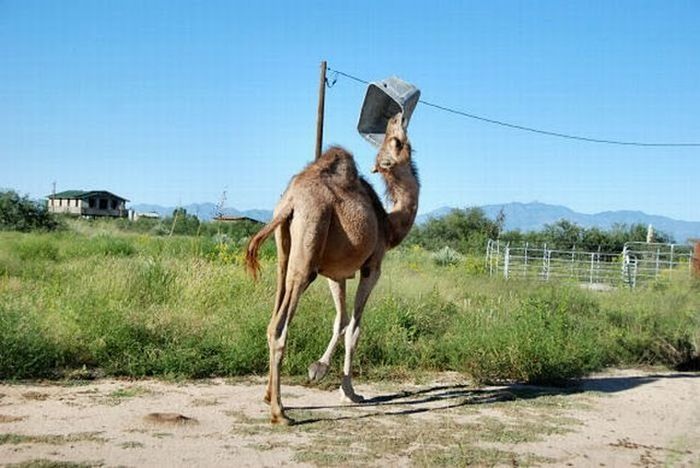|
|
Camel Playing With A Trash Bin
|
A small population of introduced camels, dromedaries and Bactrians survived in the Southwest United States until the second half of the 20th Century. These animals, imported from Turkey, were part of the U.S. Camel Corps experiment and used as draft animals in mines and escaped or were released after the project was terminated. A descendant of one of these was seen by a backpacker in Los Padres National Forest in 1972. Twenty-three Bactrian camels were brought to Canada during the Cariboo Gold Rush.
Camels do not store water in their humps as is commonly believed. The humps are actually a reservoir of fatty tissue. Concentrating body fat in their humps minimizes heat-trapping insulation throughout the rest of their body, which may be an adaptation to living in hot climates. When this tissue is metabolized, it acts as a source of energy, and yields more than 1 g of water for each 1 g of fat converted through reaction with oxygen from air. This process of fat metabolization generates a net loss of water through respiration for the oxygen required to convert the fat.
A camel's thick coat is one of their many adaptations that aid them in desert-like conditions.
|
|









